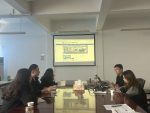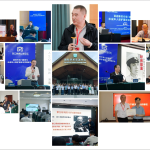Fish harvesting has been a cornerstone of human interaction with marine environments for thousands of years. As a fundamental aspect of marine resource utilization, it supports global food security, sustains economies, and shapes cultural traditions. Understanding the science behind fish harvesting reveals a fascinating evolution from ancient methods to today's cutting-edge technologies, illustrating how scientific advancements continue to influence sustainable practices and economic growth.
2. Biological and Ecological Foundations of Fish Harvesting
3. Modern Technologies and Methods in Fish Harvesting
4. Economics and Cultural Impact of Fish Harvesting
5. Case Studies of Modern Fish Harvesting Practices
6. Innovations and Future Trends in Fish Harvesting
7. Non-Obvious Aspects of Fish Harvesting Science
8. Conclusion: The Interplay Between Science and Modern Uses
1. Introduction to the Science of Fish Harvesting
a. Overview of fish harvesting as a fundamental aspect of marine resource utilization
Fish harvesting encompasses the methods and practices used to catch fish from marine and freshwater environments. It forms a vital part of global food systems, providing over 20% of animal protein consumed worldwide. From small-scale community fishing to industrial-scale operations, the science behind harvesting techniques ensures efficient and sustainable extraction of fish resources.
b. Historical evolution from traditional fishing to modern techniques
Historically, fishing relied on simple tools like nets, hooks, and traps, often driven by local ecological knowledge and manual labor. Over centuries, technological innovations such as sailboats, mechanized nets, and refrigeration transformed fishing into a global industry. Today, modern fish harvesting integrates advanced sensors, automation, and data analytics to improve yield and sustainability, illustrating a continuous evolution driven by scientific progress.
c. Significance of fish harvesting in global food security and economy
The global fish industry is worth over $150 billion annually, supporting millions of jobs. Fish provides essential nutrients and sustains economies in coastal communities. Moreover, fish harvesting practices directly influence food security, emphasizing the need for sustainable methods that balance economic benefits with ecological health.
2. Biological and Ecological Foundations of Fish Harvesting
a. Fish biology and behavior influencing harvesting methods
Understanding fish biology—such as reproductive cycles, migratory patterns, and feeding behaviors—is crucial for effective harvesting. For instance, species like Atlantic salmon undertake seasonal migrations, which fishers exploit using specific gear and timing. Behavioral studies enable targeted fishing, reducing bycatch and environmental impact.
b. Impact of fishing practices on marine ecosystems
Unsustainable fishing can cause overfishing, habitat destruction, and bycatch of non-target species. For example, trawling can damage seabed habitats, affecting biodiversity. Scientific research informs regulations and gear modifications to mitigate these impacts, promoting ecosystem resilience.
c. Sustainable harvesting: principles and importance
Sustainable fishing involves practices that maintain fish populations and ecosystems for future generations. Principles include quota management, gear restrictions, and protected areas. The Marine Stewardship Council certification exemplifies efforts to promote responsible harvesting, aligning ecological health with economic interests.
3. Modern Technologies and Methods in Fish Harvesting
a. The role of advanced sonar, GPS, and automation in locating and catching fish
Modern fishers utilize sonar and GPS systems to precisely locate schools of fish, significantly increasing efficiency. For example, active sonar can detect fish at depths exceeding 200 meters, reducing time and fuel consumption. Automation in vessels and gear further enhances productivity while minimizing environmental footprint.
b. Innovations like fish farms and aquaculture
Aquaculture has emerged as a sustainable alternative to wild capture, allowing controlled breeding and harvesting. Technologies such as recirculating systems and selective breeding improve yields and reduce ecological impacts. Countries like Norway and Chile lead in aquaculture innovations, demonstrating the integration of biology and engineering.
c. The integration of data analytics and AI in optimizing harvest efficiency
Artificial intelligence and data analytics analyze environmental data, fish movement patterns, and market demand to optimize harvesting schedules. Machine learning algorithms help predict fish migrations, enabling proactive fishing strategies that balance productivity with conservation.
4. Economics and Cultural Impact of Fish Harvesting
a. Economic scale: prize money in fishing tournaments exceeding $300 million annually
Competitive fishing tournaments, such as the Bassmaster Classic or International Billfish Tournament, generate hundreds of millions in prize money and tourism revenue. These events stimulate local economies and highlight the cultural significance of fishing as a sport and tradition.
b. Cultural significance of fishing traditions worldwide
Fishing traditions vary globally—from Japan’s Tsukiji fish markets to Scandinavian fishing festivals—reflecting local histories and identities. These practices foster community cohesion and transmit ecological knowledge across generations.
c. The influence of luxury fishing assets, exemplified by the $4.8 billion fishing yacht
Luxury assets such as the $4.8 billion yacht “History Supreme” showcase the intersection of fishing culture and wealth. These vessels are equipped with state-of-the-art technology, blurring lines between recreational fishing and opulent lifestyle statements, yet they also promote awareness of marine resources among affluent communities.
5. Case Studies of Modern Fish Harvesting Practices
a. The "Fishin' Frenzy" as an educational and entertainment platform illustrating modern techniques
Platforms like huge fish bonus wins exemplify how interactive media educate audiences on sustainable fishing principles. While primarily entertainment, such initiatives demonstrate core concepts like fish behavior, gear safety, and eco-conscious practices, making complex science accessible.
b. Notable catches: the largest lobster weighing 44 pounds and their implications
The record-breaking 44-pound lobster caught off Nova Scotia highlights advances in trapping technology and fishery management. Such feats often lead to discussions on the maximum sustainable size and quotas, reinforcing the importance of scientific data in regulating catches.
c. The role of international tournaments and high-stakes fishing events
International competitions like the World Cup of Saltwater Fishing foster global cooperation and knowledge exchange. They showcase technological innovations and promote sustainable practices, influencing fisheries policies worldwide.
6. Innovations and Future Trends in Fish Harvesting
a. Emerging technologies like drone-assisted fishing and robotic gear
Drones equipped with cameras and sensors can scout fish schools from above, reducing human effort and disturbance. Robotic gear, such as autonomous trawlers and smart nets, promise increased efficiency and reduced ecological impact—all grounded in ongoing research and engineering breakthroughs.
b. Potential for sustainable and eco-friendly harvesting methods
Innovations like selective gear that minimizes bycatch and eco-friendly bait alternatives are being developed. These technologies aim to balance harvest efficiency with the preservation of marine biodiversity, aligning with global sustainability goals.
c. Ethical considerations and regulations shaping future practices
As technological capabilities expand, so do ethical debates around genetic modification, ecosystem impacts, and fair access. International regulations, such as the FAO Code of Conduct for Responsible Fisheries, guide responsible innovation and conservation efforts.
7. Non-Obvious Aspects of Fish Harvesting Science
a. The psychological and social dynamics of competitive fishing and tournaments
Competitive fishing influences not just economic decisions but also social identity. The thrill of victory and community bonds fostered in tournaments can motivate technological adoption, even when it raises ethical questions about environmental impacts.
b. The influence of economic incentives on fishing practices and technology adoption
High financial stakes drive innovation, with fishers adopting advanced gear and data-driven strategies to maximize catches. This economic pressure can sometimes conflict with conservation goals, underscoring the need for balanced regulations.
c. The interdisciplinary nature of fish harvesting, combining biology, engineering, economics, and ethics
Effective fish harvesting relies on integrating knowledge from multiple fields. Biological insights inform sustainable quotas, engineering develops efficient gear, economics incentivizes responsible practices, and ethics ensure ecological and social considerations are prioritized.
8. Conclusion: The Interplay Between Science and Modern Uses in Fish Harvesting
"Scientific understanding is the backbone of technological innovation in fish harvesting, enabling sustainable practices that are vital for future food security and ecosystem health."
In summary, the science of fish harvesting has evolved through a deeper understanding of marine biology, technological advancements, and ecological principles. These developments support not only increased efficiency but also the imperative of sustainability. Educational initiatives and modern platforms like Fishin' Frenzy serve as valuable tools to promote awareness, responsible fishing, and conservation, ensuring that the benefits of fish harvesting continue for generations to come.
As technology continues to advance, integrating ethical considerations and ecological principles will be essential. The future of fish harvesting hinges on a multidisciplinary approach that values innovation, sustainability, and cultural heritage—guiding us toward a responsible and prosperous relationship with our oceans.


.png)


















